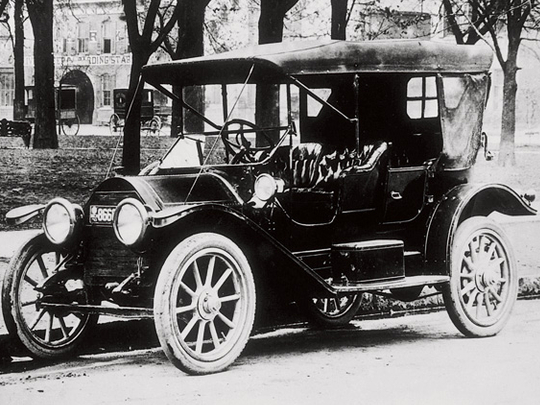
We just got a call from Cadillac offering us one of its newer models as a long-termer. Irrespective of what model it is, and what engine sits under the bonnet, a Caddy is always welcomed into the wheels tower. Because we absolutely love one particular feature in the cars — the remote start button in the key fob that not only cranks the engine, but also starts the AC on full blast while you're metres away. What better news could you get during the scorching hot summer months of Dubai?
Remote start, push start, smartphone start… there are endless ways to fire your car up nowadays, leading us to take this all-important function for granted.
Although these technologies evolved over several decades, we have none other than Cadillac and its 1912 Model 30 Touring Edition car to thank for starting it all, that too a hundred years ago. In the late 1880s and early 1900s, cranking a motor car was a painfully tedious process. This involved adjusting several levers inside, before getting out and walking around to the front of the car and manually turning the crank to fire up the engine. As cars and engines grew in size, so did the effort required to hand-crank these multi-cylinder internal combustion metal lumps. In fact, hand-cranking was considered the biggest risk factor associated with automobiles at that time, with the backfiring crank levers causing serious injuries, fractures and even deaths.
Although everyone knew about the dangers of hand-cranking, it was a mishap that happened in 1908 that proved a turning point. On that fateful day, a Cadillac driven by a woman stalled in Belle Island, Michigan, when Byron Carter, a friend of Cadillac founder Henry Leland, passed by. Carter offered to help the stranded woman, but unfortunately the lever kicked back, hitting him in the face, and leading to his eventual death. A devastated Leland decided to get rid of the hand-cranking business and contracted Charles Kettering of the Dayton Electric Company (Delco) to supply an electric starter for his cars.
Thus in 1912, the Model 30 Touring Edition rolled out equipped with the ingenious electrical self starter developed by Kettering, making it the world's first automobile that didn't have to be hand-cranked, and changing the fortunes of the fledgling Delco forever.
The Model 30, which was first launched in 1908 after General Motors acquired Cadillac, was the company's only model on sale until 1914, and was powered by a 30 horsepower, four-cylinder engine mated to a selective type sliding gear transmission.
And the inclusion of the Delco Electric Plant changed its and General Motors' fortunes completely. This ‘plant' consisted of a powerful yet compact generator or dynamo located on the side of the engine, generating current while the engine is in operation, which charges a storage battery, while transforming itself into a motor to crank the engine.
The advent of the electric starter in the Model 30 also led the way to many other innovations, including the Gray & Davis electric headlamps, featuring adjustable focus, as well as electric side lights, taillights and speedometer lights, paving the way for replacing traditional gas-powered lights.
With these groundbreaking innovations, the 1912 model changed the course of automobiles forever, and can be rightly called the actual precursor to the modern-day automobile.











